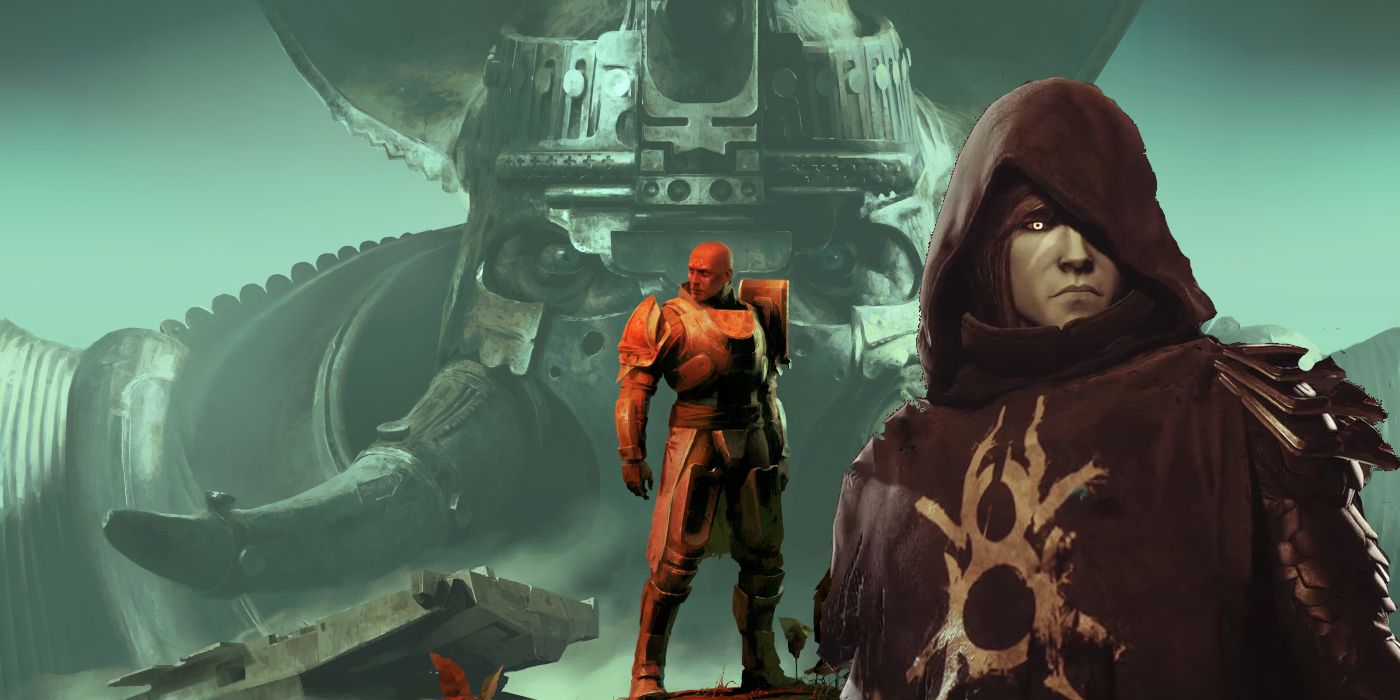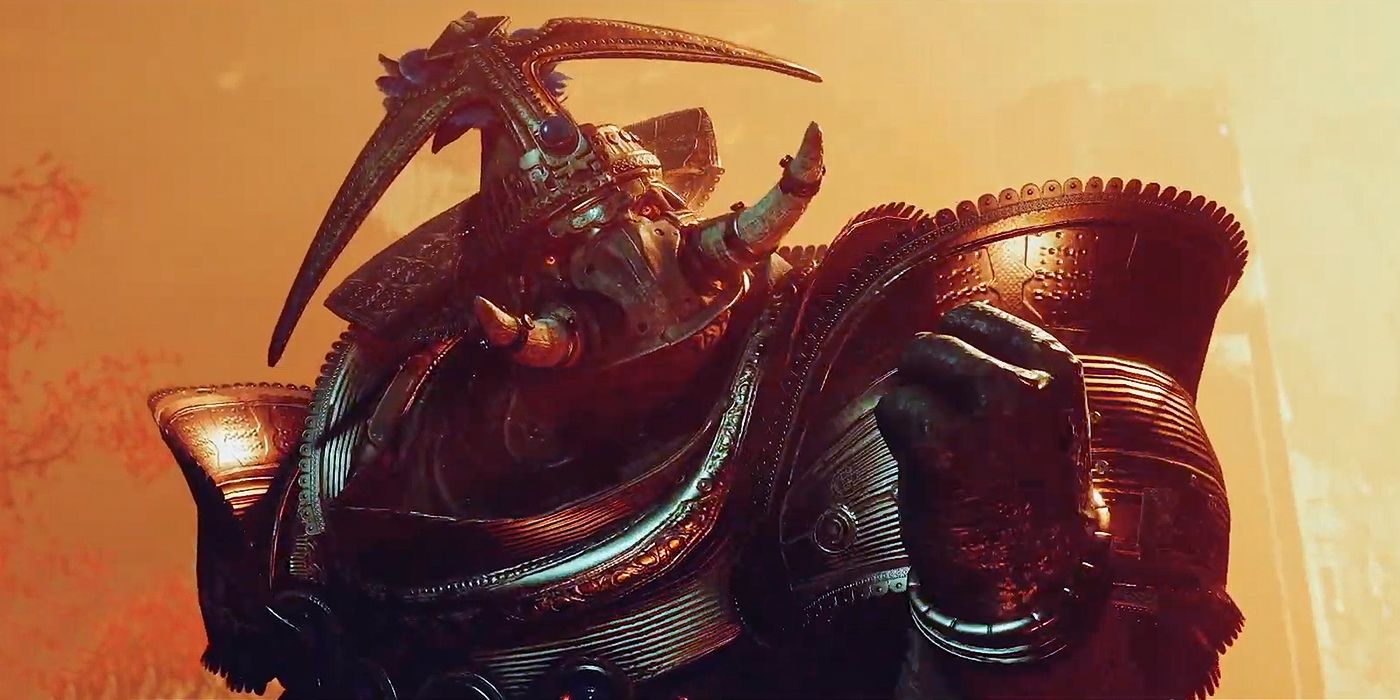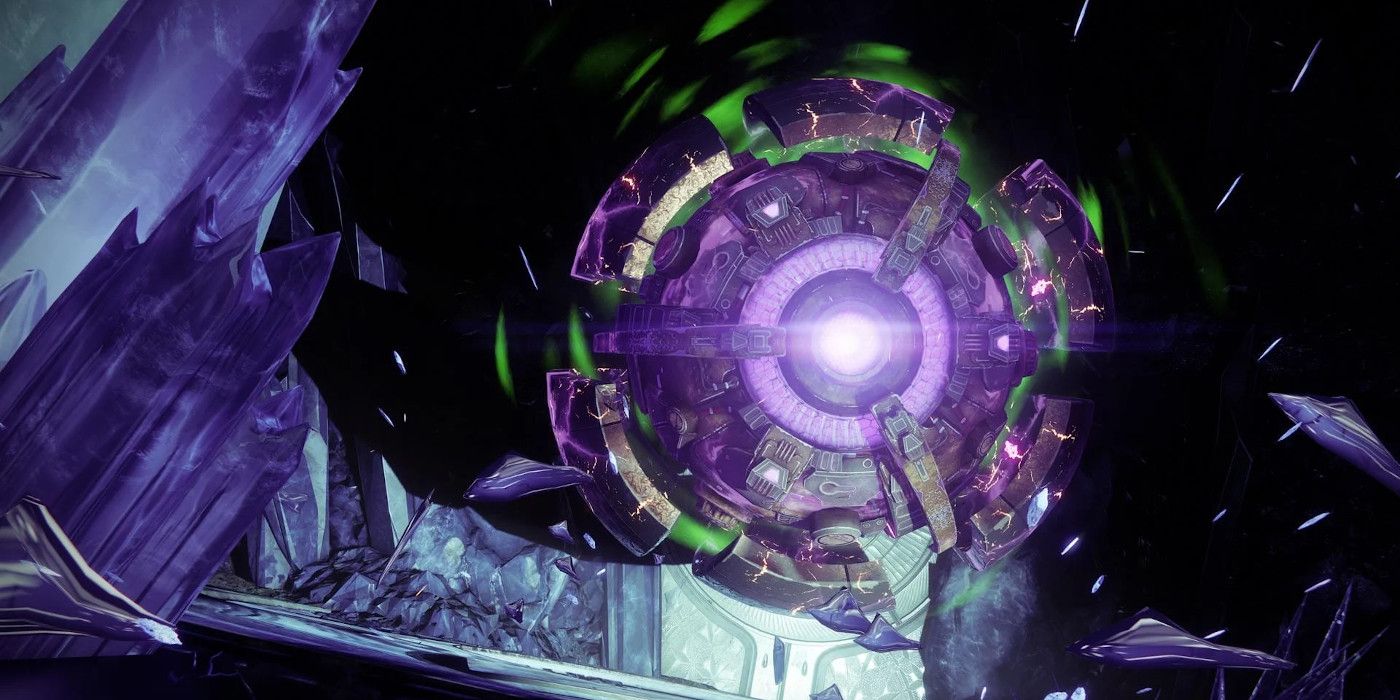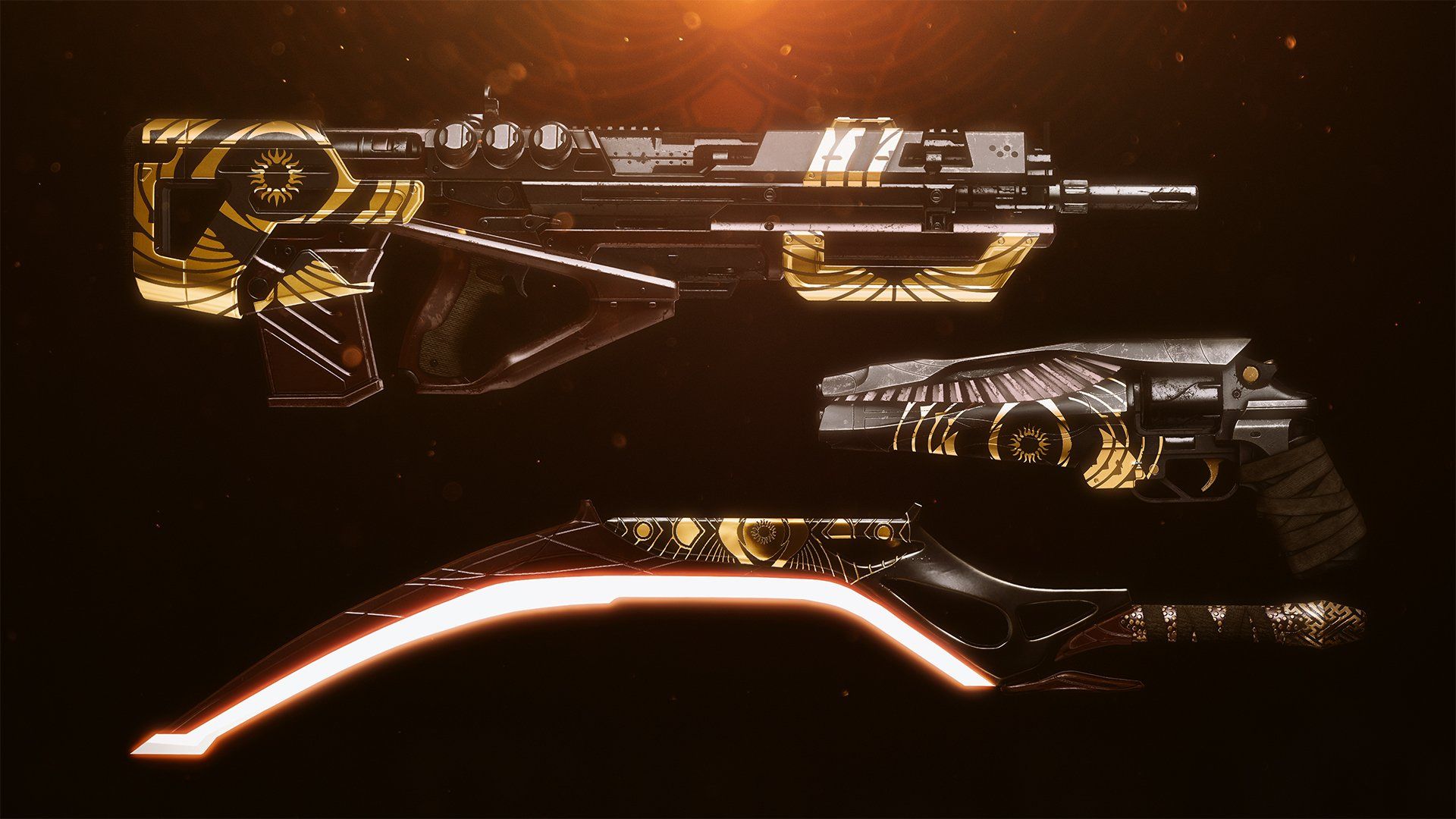Destiny 2's Season of the Chosen is in full swing and players are confronting the Cabal across the system to take down Caiatl's prospective war council members. The community response to this season so far has been predominantly positive, especially when compared to last season: Season of the Hunt.
But what makes Season of the Chosen so different from Season of the Hunt? There are actually several things that Bungie is doing differently this season that many players view as a big step in the right direction for Destiny 2's seasonal content.
The Seasonal Story and Narrative Pacing
Season 12: Season of the Hunt launched alongside Beyond Light, and the story itself was centered around The Crow, a familiar-faced Lightbearer and his quest to stop the Wrathborn and the High Celebrant of Xivu Arath. They are using Hive Cryptoliths to corrupt Fallen and Hive around the Tangled Shore and the Dreaming City to amass an army of powerful troops, and Crow is looking to stop it. Perhaps the biggest pull of this Season was the identity of Crow, formerly Uldren Sov, now resurrected by his Ghost, Glint. Working alongside the former enemy of the City drew many in as they wanted to see how the narrative would unfold.
When Guardians are reborn, they have no memory of their previous life, so presumably there is no trace of who Uldren Sov once was, but the repercussions of a past life will likely haunt Crow when it comes to interacting with other Guardians of the City. Even from week one, players were itching to learn more about Crow and to see if players could free Crow from Spider's servitude. However, the pacing of the season was a bit jarring. Each hunt felt inconsequential in the grand scheme of freeing Crow, and the High Celebrant quest was essentially just a time-gated boss with little tie to the other hunts. Most of the narrative was given through text blocks, with a couple interesting conversations from Crow during the Hunts. While it showed that Xivu Arath is beginning to spread her influence in thesystem, it did most of it through text and lore, and not through the missions themselves.
Now with Season 13: Season of the Chosen, things are quite a bit different. Players work with Osiris, Crow, Saladin, and Amanda Holliday to go against Caiatl's army and disassemble her war council one-by-one. While this season is currently ongoing, each week has brought a new Battleground to take on and a new quest and dialogue from the focal characters in this season. Caiatl is more than just a name thrown around until the end of the season when the Guardian puts an end to her tirade.
Her motivations are complex, and she is very present in the game during several battlegrounds and debriefings at the HELM's War Table. There's even a ton of dialogue that really fleshes out the main set piece characters during each of the Battlegrounds. Holliday and Saladin rarely got screentime in Destiny 2 (outside of Saladin during the Iron Banner), and while fans knew a bit about Saladin from the Rise of Iron expansion in Destiny, fans seeing a lot more about the kind of person he really is during these missions. We don't know where this season's story is heading, but many fans are looking forward to more interactions with Caiatl and Zavala, as well as more screentime for Crow, who has quickly become a fan-favorite character.
Gameplay Loop: Wrathborn Hunts vs. Battlegrounds
Each season in Destiny 2 revolves around one big gameplay activity, which usually goes hand-in-hand with the core playlists in one way or another. Season 12 had the Wrathborn hunts, where players did activities around the system to charge their Cryptolith Lure and obtain a specific piece of gear that is determined and refined during the lure creation process. There were four main bosses and then the High Celebrant that players could fight, though the High Celebrant could only be fought once per week. Of the four main bosses, two Fallen bosses and two Hive bosses, they served as little more than bullet sponges with a surprisingly low health pool.
Using powerful weapons like The Lament could mean that these hunts only lasted around 15-30 seconds, especially once beneficial modifiers were unlocked during the hunts. The ratio of time spent in hunts to time spend doing other activities to get Lure Charges was severely off-balance. Even after Bungie increased the number of charges players could hold, it was still a lot of work just to be able to do a 30-second activity.
When compared to the Battlegrounds activity, the hunts seem even smaller. The new Battlegrounds activities are on-par with the length of strikes, and feature a set of objectives that need to be completed before players can challenge the boss. Each Battleground also feels unique event the two that are both set on Nessus (Caiatl needs to give the Thresher pilots and drop pod launchers a raise). While all of the Battleground bosses are nothing special, they do feel threatening, and the enemy density in these activities is engaging. Players don't have to fight each other for kills, because there are plenty of enemies to go around. They last a fair amount of time, and are not easy to take on when doing them in the Battlegrounds playlist.
Another big factor with these activities is that you don't need Cabal Gold to actually do the Battleground, just to get rewards from the Tribute Chest at the end, meaning that if players just want to have fun in the chaotic war zones then they can do so without having to grind Strikes, Public Events, and other activities. It is leaps and bounds better in nearly every aspect when compared to the Wrathborn Hunts.
It would be remiss to not mention the Umbral Engrams which made a return this season as well. While they are not tied exclusively to the Battlegrounds, the HELM upgrade tree will allow players to earn focused engrams through the activity, so it's worth tossing that in here as well. The Umbral Engrams can be focused so the drops will be a specific type of item, and players can use Hammer Charges from the Battlegrounds to focus the engrams further. If players want to get Season of the Chosen gear only, they can do that. If players want to get a high Recovery roll on some armor, they can do that - but that'll cost a lot more resources. This is Season 13's answer to Season 12's focused item chase, and it gives a lot of freedom to players when they are looking for a specific piece of gear.
Seasonal Weapons
Season 12 introduced a handful of new weapons to the loot pool, but the weapons that were added were far overshadowed by the sheer number of weapons lost due to sunsetting. This left quite a bad taste in many players' mouths during Season 12, but even outside of that, there was only one weapon tied to the hunts that players gravitated towards: Deafening Whisper. This breech-loaded grenade launcher behaves a bit differently than most. Instead of detonating in a controlled blast, Deafening Whisper creates a wave of energy that travels forward from the point of impact, allowing for some fun kills. Unfortunately, most of the other Season of the Hunt weapons were a bit lackluster by comparison.
Season of the Chosen, on the other hand, introduced not only new weapons, but new perks as well, making the chase for gear all the more enticing. There are several powerful weapons players should chase this season, and thanks to the Umbral Engrams it is easy to hone in on specific drops. Extraordinary Rendition is the Kinetic SMG introduced this season, and not only is it one of the few decent non-Sunset Kinetic SMGs, but it also can roll with a variety of perks that make it powerful. Outlaw is always fun, Rampage and Multi Killclip are also great options. But the star of this season has got to be the new perk, Frenzy. Frenzy increases weapon damage, handling, and reload speed while in combat. This perk is grown to be one of the best-in-slot perks for PvE especially, as players will almost always be in-combat until either they die, or they are the last ones standing. Frenzy can roll on other weapons too, including the new powerful Code Duello rocket launcher, but it really shines on Extraordinary Rendition.
Exotic Quest: Harbinger vs. Presage
One of the biggest draws each season is the seasonal Exotic Quest. Season 12 saw the return of the beloved Destiny hand cannon Hawkmoon with the Harbinger quest. Players worked alongside Crow to stop Savathun's corruption of the Shard of the Traveler and reforge Hawkmoon in its new form. This quest was repeatable, changing layouts on a rotation, and gave players a chance to earn randomly-rolled Hawkmoons. Harbinger is a challenging activity, especially if not properly geared for it, so it gave players some extra endgame PvE content to tackle every week for Pinnacle rewards. The exploratory nature of Harbinger is its biggest draw, especially when searching for the many Paracausal Feathers located throughout the mission. Harbinger was very well-received within the community, and many appreciated its difficulty, especially for those trying to go at it solo.
Season 13 brought the Presage mission, where players boarded the derelict ship, the Glykon, responding to a distress signal from another Lightbearer. Once players boarded the Glykon, the tone shifted hard from Destiny to something straight out of Ridley Scott's Alien. Since it is a new activity, players should go in blind (and maybe even solo) for their first time aboard the Glykon for the most impactful experience. The mission itself is incredibly fun, slightly terrifying, and all-around well designed. It's jam-packed full of lore that is fascinating to read and contains many hints and clues about our foes and what the future holds for the Destiny universe.
In terms of the two exotics rewarded from these quests, both are incredibly powerful and fun to use in their own right. Hawkmoon is nothing like its Destiny counterpart. Now, players build up stacks of Paracausal Charge after hitting either Precision Hits or Final Blows, and the last shot of Hawkmoon's magazine consumes the Paracausal Charge to deal bonus damage (increasing exponentially based on the number of stacks). It can dish out some crazy damage with max stacks, so it's grown to be a fan-favorite even if its not the same as it used to be.
Dead Man's Tale is Presage's exotic, and it also focused on Precision Hits. Each Precision Hit (Stacking up to 5) increases the damage and reload speed of the weapon. While the damage isn't as wild as Hawkmoon, it is still incredibly powerful for smaller targets. The catalyst for the weapon, now available through the Master Difficulty Presage mission, removes the penalties from hip-firing the weapon, essentially turning it into a long-range Last Word. Both serve different roles, and are incredibly fun to use - though it seems fans are enjoying Presage a bit more than Harbinger overall.
Overall, Season of the Chosen has a lot more content, and a lot more freedom for players than Season of the Hunt had. Season of the Hunt felt like it was carried by the fact that it launched alongside Beyond Light, but Season of the Chosen stands on its own as a solid continuation of Destiny 2's world. With the removal of Sunsetting, players can even now grind weapons without fear that the weapon they get will be worthless in a season or two. Season of the Chosen is setting the bar for what to expect with seasonal content, but it'll be interesting to see how it holds up as we get further into the season.
Destiny 2: Beyond Light is available now for PC, PS4, PS5, Stadia, Xbox One, and Xbox Series X/S.





